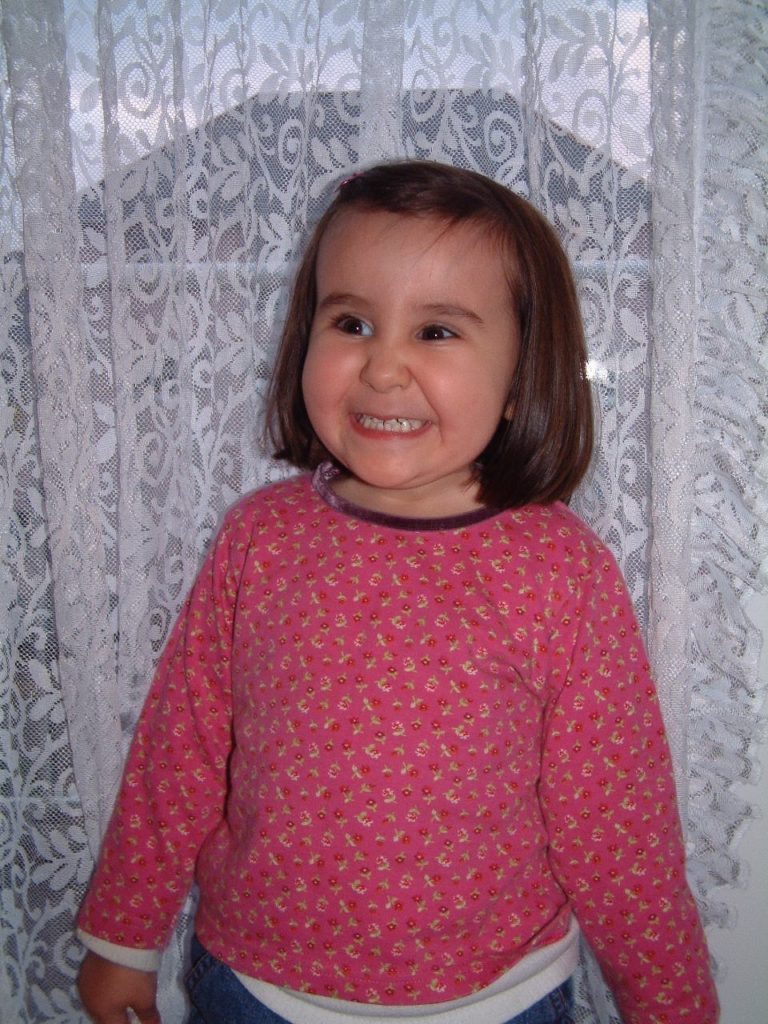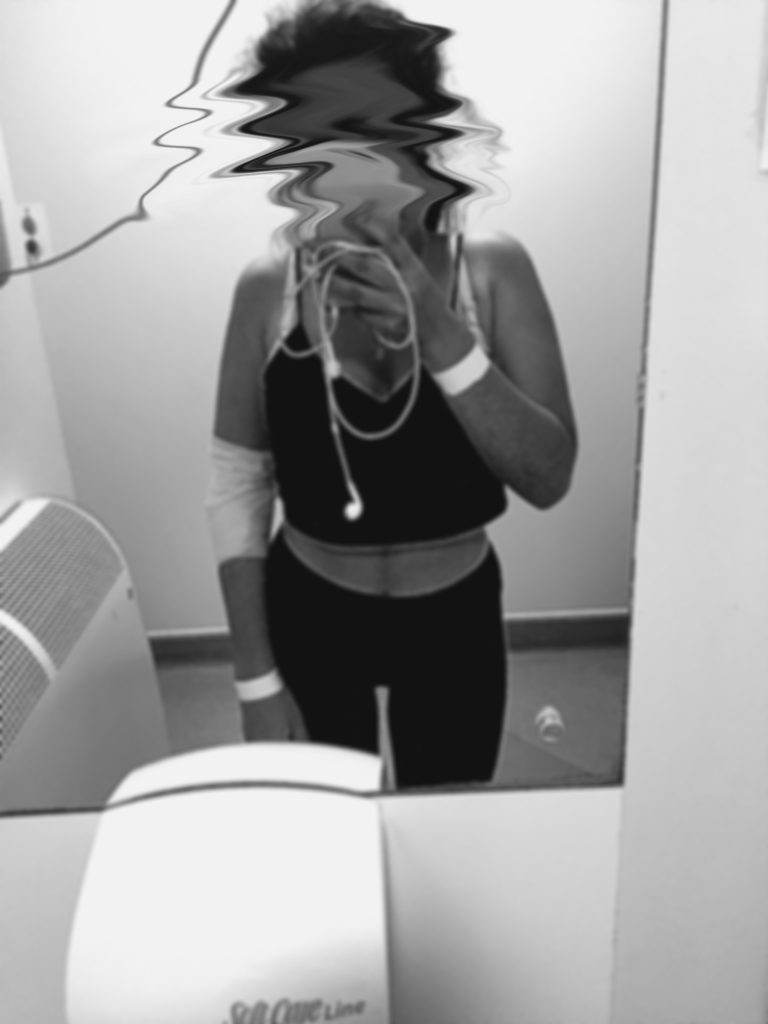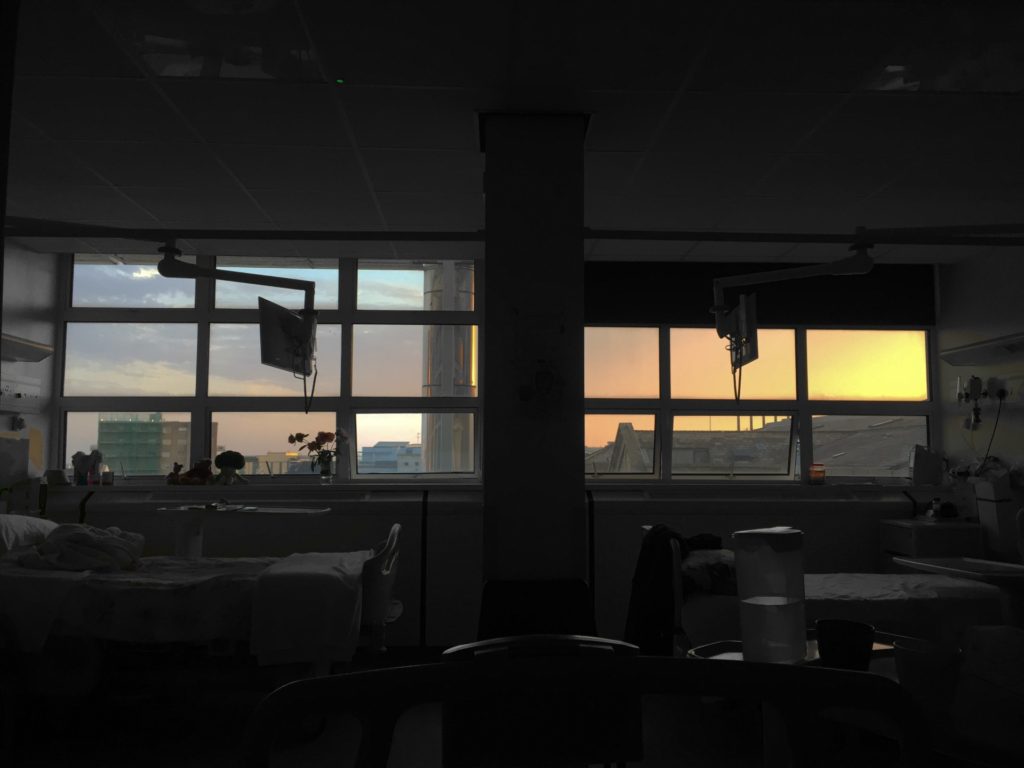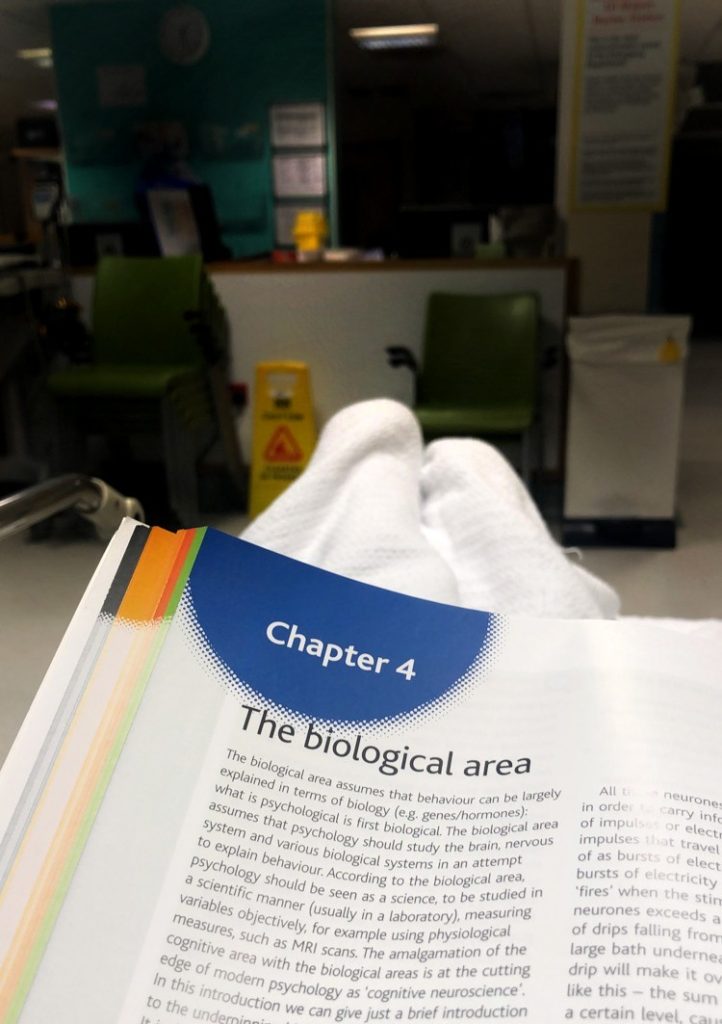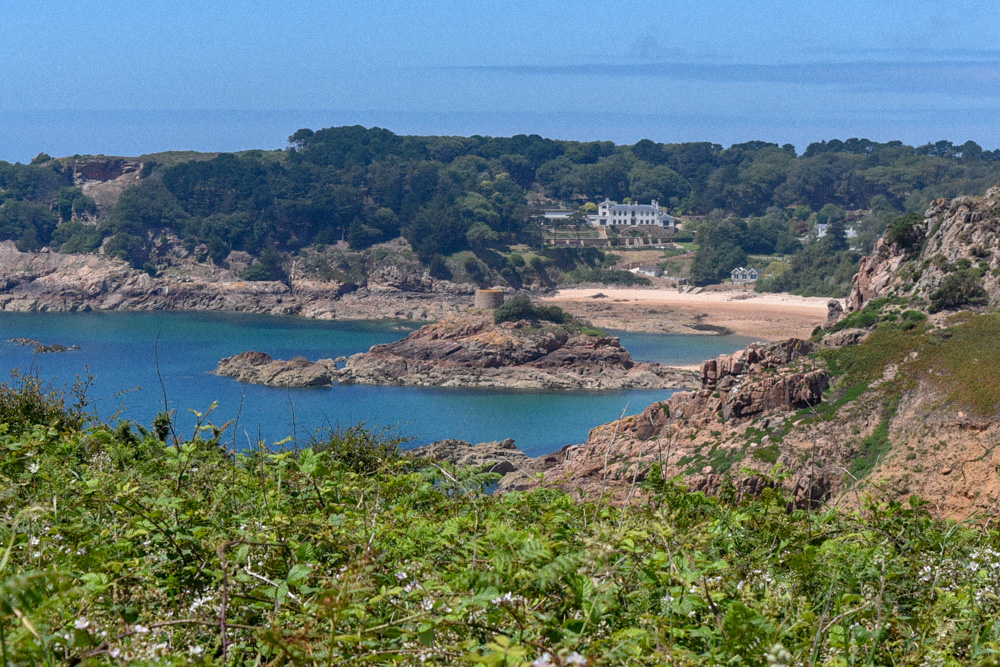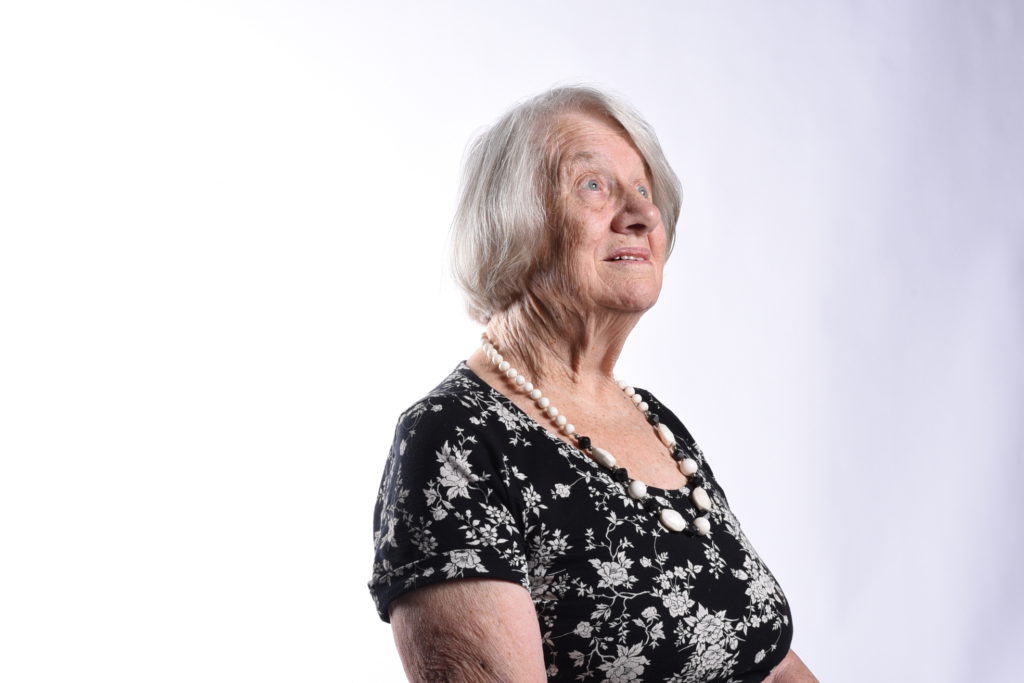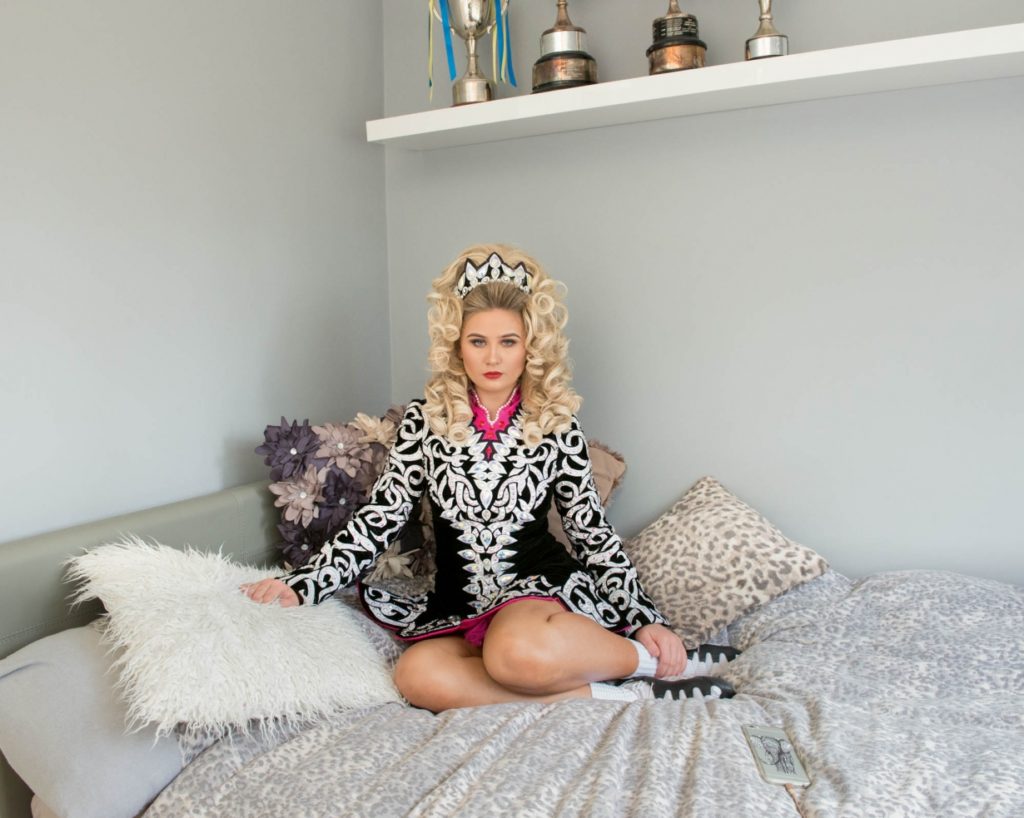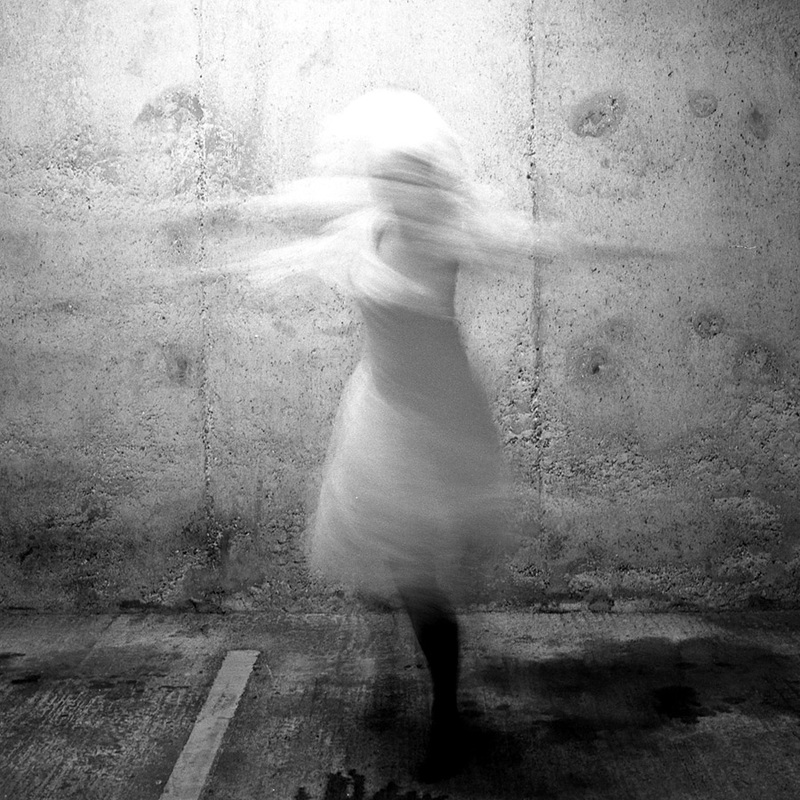
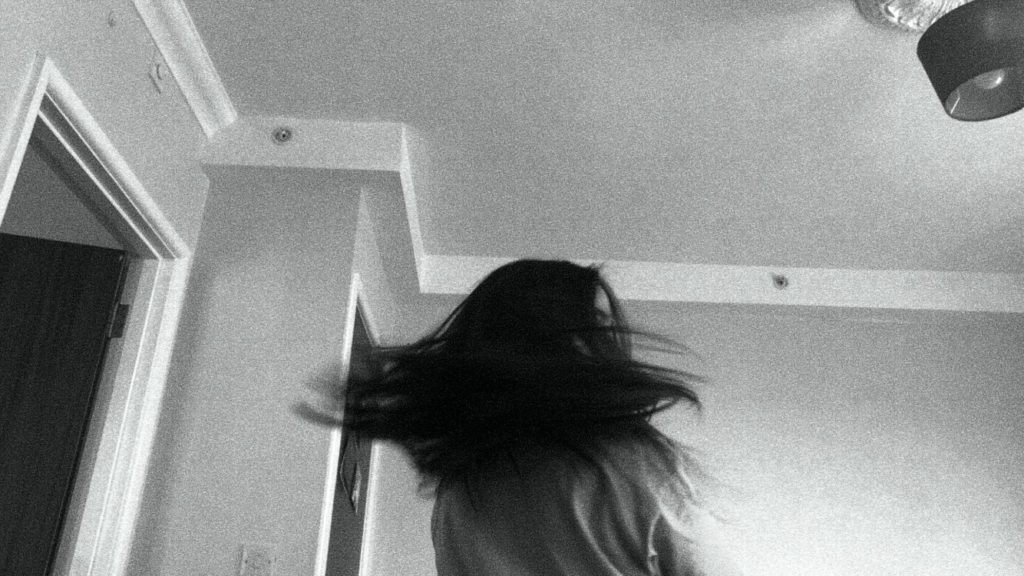
Francesca Woodman’s work and my own have few similarities however these are also met with obvious differences, the first difference of which is noticeable is that Woodman’s image is of the whole length of her body where as mine is of the top half of my body. Although I was trying to recreate this image in my own way, the reason for this was because of the space that I actually had in my bedroom in order to get far enough away from the camera that I could’ve got my whole length of body in the frame. Another difference between mine and Francesca Woodman’s work is the locations that both the photographs were taken, she took hers in what appears to be a quite empty car park, where as mine was taken in my bedroom. I like Woodman’s original photograph due to the dramatic feel the location gives the image, however the aim of my series was to portray the journey of mental illness, in particular depression, and so to enable this to have a more personal feel I decided to use my own environment to create my images whist still taking inspiration from the original.
The biggest similarity between Woodman’s and I’s work is the movement that we show by spinning whilst using a slow shutter speed, I believe that this is the most important part of the image as it has the biggest impact. We are both in the center of the photograph making us the focal point, catching the viewers eyes. Another similarity when it comes to this is the fact that in order to produce this work we have both used self portraits, using ourselves as both the subject and the photographer by using the self timer setting on out cameras, which again has made this a more personal piece of work.

